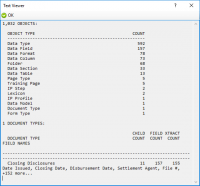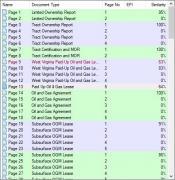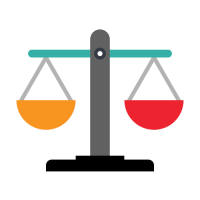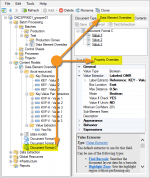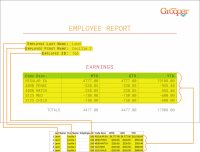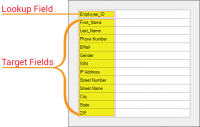Main Page: Difference between revisions
Dgreenwood (talk | contribs) No edit summary |
Dgreenwood (talk | contribs) No edit summary |
||
| Line 19: | Line 19: | ||
|-style="background-color:#d8f3f1" valign="top" | |-style="background-color:#d8f3f1" valign="top" | ||
| | | | ||
[[file:data-rule-icon.png|right]] | |||
<blockquote style="font-size:14pt"> | <blockquote style="font-size:14pt"> | ||
''[[ | '''[[Data Rule]]''' | ||
</blockquote> | </blockquote> | ||
The '' | The '''Data Rule''' object allows for complex validation and manipulation of a '''Data Model's''' '''Data Elements''' ('''Data Fields''', '''Data Sections''', and '''Data Tables''') in Grooper. | ||
This allows users to create a conditional hierarchy of actions to take if certain conditions met. These conditions are configured using .NET, LINQ and/or lambda expressions. When the expression is "triggered", either evaluating to "true" or "false", certain actions can be made. These include: | |||
* ''Calculate Value'' - This action sets the value of a '''Data Field''' or cells a '''Data Column''', using calculate expressions to perform mathematical or concatenation operations of '''Data Elements'''. | |||
* ''Clear Item'' - This action clears the value of a '''Data Element'''. | |||
* ''Copy Item'' - This action copies or moves the value of a '''Data Element'''. | |||
* ''Parse Value'' - This action uses a regular expression pattern to return part of a '''Data Field's''' value or cell in a '''Data Column's''' value. | |||
* ''Raise Issue'' - This action adds an issue to the issue log, used for validating a '''Data Element'''. This action can also be used to flag the '''Data Element'''. | |||
These trigger conditions and subsequent actions set on the '''Data Rules''' objects are executed through the '''Apply Rules''' activity ''after'' data is extracted from an '''Extract''' activity. | |||
| | | | ||
The earliest examples of OCR (Optical Character Recognition) can be traced back to the 1870s. Early OCR devices were actually invented to aid the blind. This included "text-to-speech" devices that would scan black print and produce sounds a blind person could interpret, as well as "text-to-tactile" machines which would convert luminous sensations into tactile sensations. Machines such as these would allow a blind person to read printed text not yet converted to Braille. | The earliest examples of OCR (Optical Character Recognition) can be traced back to the 1870s. Early OCR devices were actually invented to aid the blind. This included "text-to-speech" devices that would scan black print and produce sounds a blind person could interpret, as well as "text-to-tactile" machines which would convert luminous sensations into tactile sensations. Machines such as these would allow a blind person to read printed text not yet converted to Braille. | ||
Revision as of 08:27, 27 April 2021
| Getting Started | |||
|
Grooper was built from the ground up by BIS, a company with 35 years of continuous experience developing and delivering new technology. Grooper is an intelligent document processing and digital data integration solution that empowers organizations to extract meaningful information from paper/electronic documents and other forms of unstructured data. The platform combines patented and sophisticated image processing, capture technology, machine learning, natural language processing, and optical character recognition to enrich and embed human comprehension into data. By tackling tough challenges that other systems cannot resolve, Grooper has become the foundation for many industry-first solutions in healthcare, financial services, oil and gas, education, and government. |
Getting Started | ||
| Install and Setup | |||
| 2.90 Reference Documentation | |||
| New in 2.9 | Featured Use Case | ||||||||||||||||||||||||||||||||||||
|

Discover how they:
| ||||||||||||||||||||||||||||||||||||
Feedback
| Feedback | |
|
We value your feedback! | |
| Other Resources | |||
|
|||


